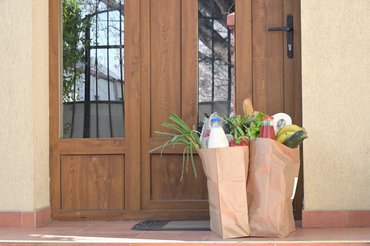Grocery ecommerce delivery grew faster than ecommerce delivery overall in 2021, with grocery delivery sales rising 8 percent last year, compared with 6 percent overall, according to a report from data analytics firm 1010data.
Grocery ecommerce delivery growth in 2021 was fueled by a 14 percent increase in Instacart’s sales, the report concluded. Instacart was responsible for more than half of the absolute growth in online grocery sales in 2021, according to 1010data.
“Despite new entrants in the grocery delivery space, Instacart continues to dominate the market and secure strategic growth,” the research firm said.
The growth last year followed a quadrupling of Instacart’s sales in 2020, when 1010data estimated that Instacart’s grocery sales grew by 323 percent.
While Costco’s partnership with Instacart propelled the delivery company’s sales gains in 2020, this year’s report found that traditional grocers such as Publix and Kroger, as well as limited-assortment retailer Aldi, all helped drive Instacart’s sales growth in 2021. Each increased their sales share through Instacart by 1-2 percent last year, according to 1010data.
The report also analyzed the performance of various food categories via delivery firms Instacart and Shipt combined, and found that shelf-stable foods and beverages experienced increased sales through those platforms, while sales of perishables and household items were down in 2021 compared with 2020. Beverages in particular have shown strong year-over-year growth through Instacart and Shipt, with soft drinks up 33 percent and still water up 32 percent.
Juice sales through the third-party services were up 23 percent, and sales of salty snacks and crackers were each up 15 percent in 2021. Ice cream was up 5 percent year-over-year.
Categories that saw declines in delivery sales in 2021 included:
• Nuts, down 16 percent;
• Toilet paper, down 13 percent;
• Eggs, down 10 percent; and
• Cooking oils, down 8 percent.
Some items containing diet-specific keywords increased sales through Instacart and Shipt in 2021:
Plant-based, up 28 percent;
• Grass-fed, up 11 percent;
• Dairy-free, up 10 percent;
• Vegan, up 10 percent; and
• Gluten-free, up 3 percent.
Delivery remains a minority of the online grocery market, however.
In January, the Brick Meets Click/Mercatus Shopping Survey estimated that total online grocery sales reached $97.7 billion in 2021, about a third of which came through delivery.
The report noted that while U.S. consumers tend to prefer ordering online and picking up at the store, delivery surpassed pickup for the first time in some urban markets in December of last year.
Overall, the pickup segment grew its share of grocery ecommerce to 45 percent of online sales in 2021, up 5 percentage points over 2020, the Brick Meets Click/Mercatus report found. Delivery’s share of online grocery was flat at about 33 percent, and the share of ship-to-home fell 5 percentage points to 22 percent.
A separate report on grocery ecommerce from Coresight Research estimated that U.S. online grocery sales would grow by 32.4 percent in 2022, following estimated growth of 17.9 percent in 2021. That followed the explosion of online grocery ordering in 2020, when sales were up 94.4 percent, according to Coresight Research estimates.
“Our U.S. Consumer Tracker consistently found throughout 2021 that one-fifth of respondents bought food online, reflecting the retention of the pandemic-induced behaviors in the channel,” the Coresight Research report stated.
Related: Instacart Unveils First Brand Campaign; Costco Pilots Delivery Via Uber.

